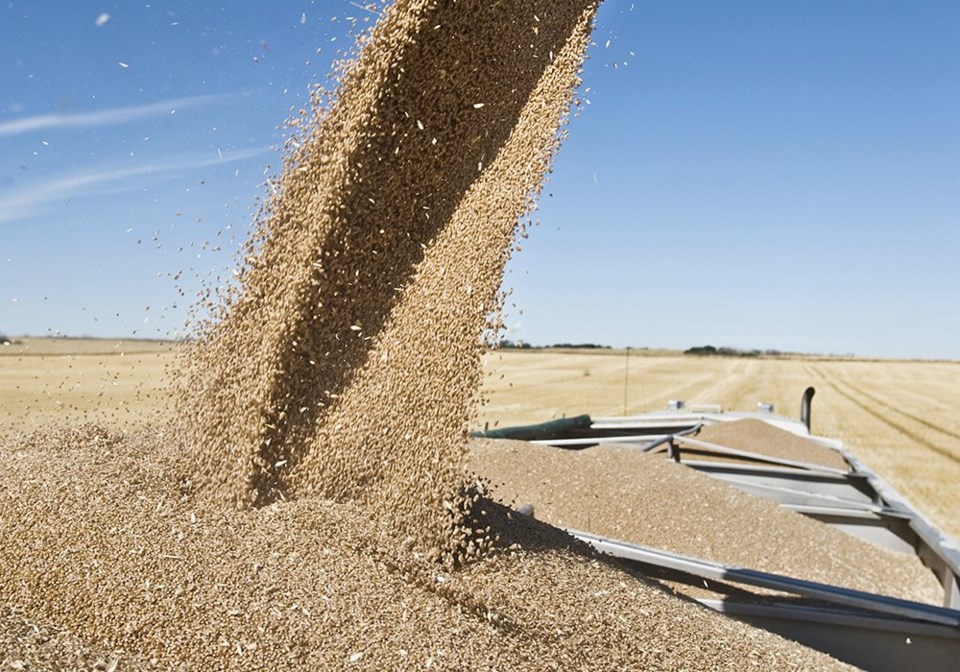WESTERN PRODUCER — Black Sea wheat production forecasts are all over the map as analysts grapple with lingering uncertainty in that region.
“There’s wildly varying estimates on production,” said MarketsFarm analyst Bruce Burnett.
Global supply of wheat could swing by millions of tonnes depending on which forecast proves correct.
“This is the largest wheat-exporting region in the world and any changes there are (are) always going to move the needle on prices,” he said.
The U.S. Department of Agriculture pegs Russia’s 2023-24 wheat production at 85 million tonnes.
That is in line with the European Crop Monitor’s forecast of 86.7 million tonnes.
However, Russia’s ministry of agriculture forecasts a much smaller crop of 78 million tonnes.
Ukraine’s forecasts are also variable. The USDA’s estimate of 17.5 million tonnes is higher than the Ukrainian government’s 16.6 million tonnes.
But the country’s farmers think it could be much larger than that, according to a survey conducted by the Ukrainian Grain Association and UkrAgroConsult.
Farmers are forecasting an average yield of 81 bushels per acre, which would result in a crop of 24.3 million tonnes.
The survey of 186 farmers and agricultural companies was conducted in the second half of June, according to a Reuters story.
Paradoxically, the UGA just released its updated production estimates, calling for 17.9 million tonnes of wheat. That appears to contradict its own survey results, adding to the confusion surrounding Black Sea forecasts.
Burnett said growing conditions have been favourable in the winter wheat growing regions of both Russia and Ukraine, but Russia’s spring wheat crop has been under stress.
He is inclined to disregard the lower production estimates, putting more faith in the higher ones.
“The trickier part is the exports, because we still don’t know what’s going to happen in that region,” said Burnett.
As of July 8, Russia still had not decided whether it will agree to extend the Black Sea Grain Initiative that expires on July 17.
The country’s foreign minister recently said he sees no reason to do so.
The deal allows Ukrainian grain to get to market through three Ukrainian Black Sea ports. To date, 8.9 million tonnes of Ukrainian wheat have been shipped to overseas markets through the agreement.
Russia said it sees no progress on its demands to reconnect the Russian Agricultural Bank to the SWIFT payment system to resume supplies of agricultural machinery and parts and to lift restrictions on insurance and reinsurance.
Russia also wants the resumption of the Togliatti-Odesa ammonia pipeline that allows Russia to pump the fertilizer to Ukraine’s main Black Sea port, and the unblocking of assets and accounts of Russian food and fertilizer exporters, according to Reuters.
The USDA forecasts Russian exports of 46.5 million tonnes in 2023-24. That is in line with SovEcon’s new estimate of 47.2 million tonnes, up from a record 46.6 million tonnes shipped in 2022-23.
“Globally, the expected significant reduction in supplies from Ukraine and Australia will support Russian wheat exports in the new season,” SovEcon managing director Andrey Sizov said in an email.
SovEcon expects Ukraine’s exports to plummet to 10 million tonnes in 2023-24 from 17 million tonnes last year. That estimate does not account for shipments from the four new “Russian territories” and Crimea.
The USDA forecasts 10.5 million tonnes of Ukrainian wheat exports, while the UGA is estimating 15 million tonnes.
Burnett said Ukraine’s exports will depend on what happens with the Black Sea Grain Initiative.
The European Union has banned imports of Ukrainian wheat, corn, rapeseed and sunflower to Bulgaria, Hungary, Poland, Romania and Slovakia through Sept. 15.
Those countries have vastly improved domestic wheat production prospects compared to last year and don’t want Ukrainian grain usurping their export markets, said Burnett.
So, if the Black Sea grain deal implodes, it will be difficult to get Ukrainian grain to markets around the world.

